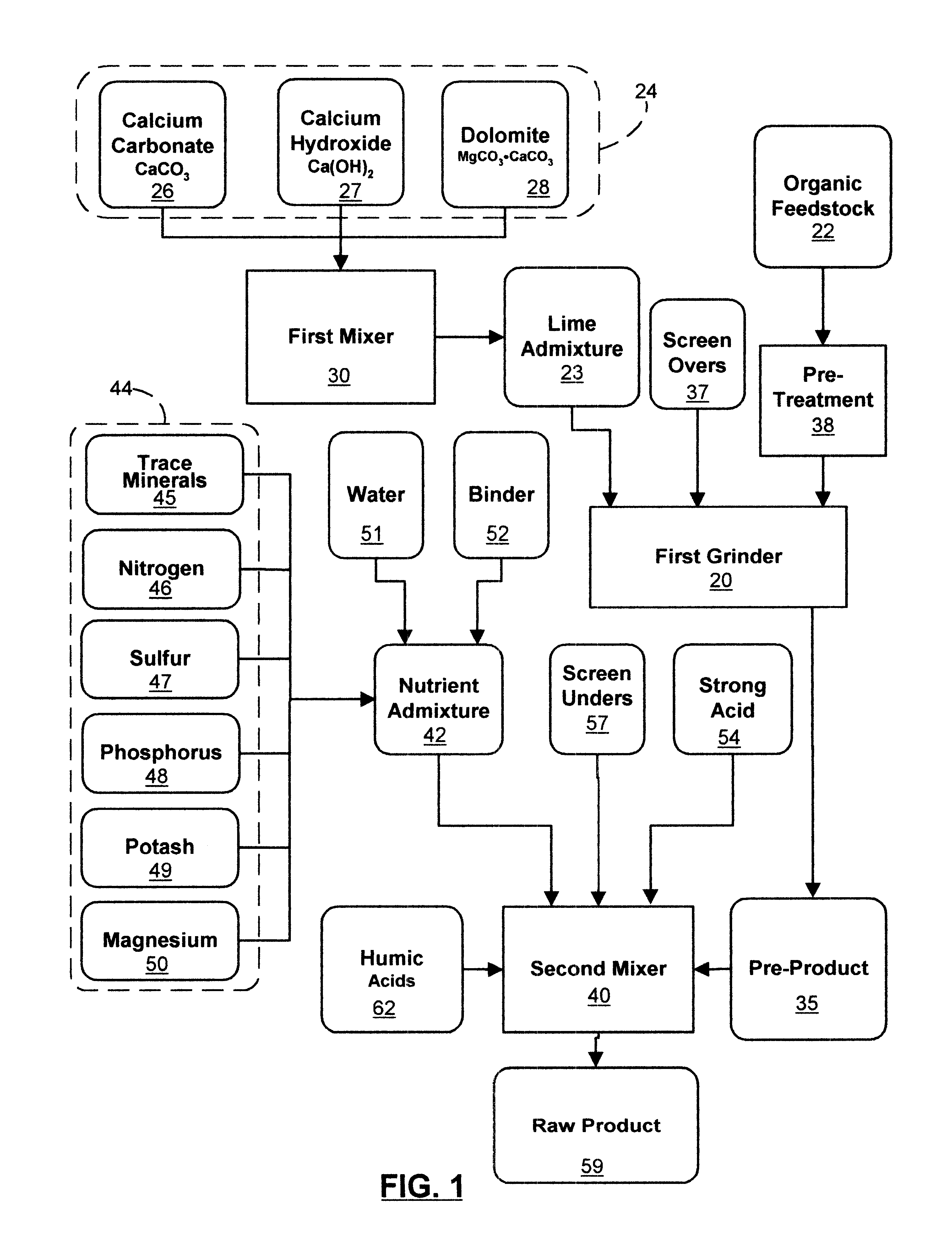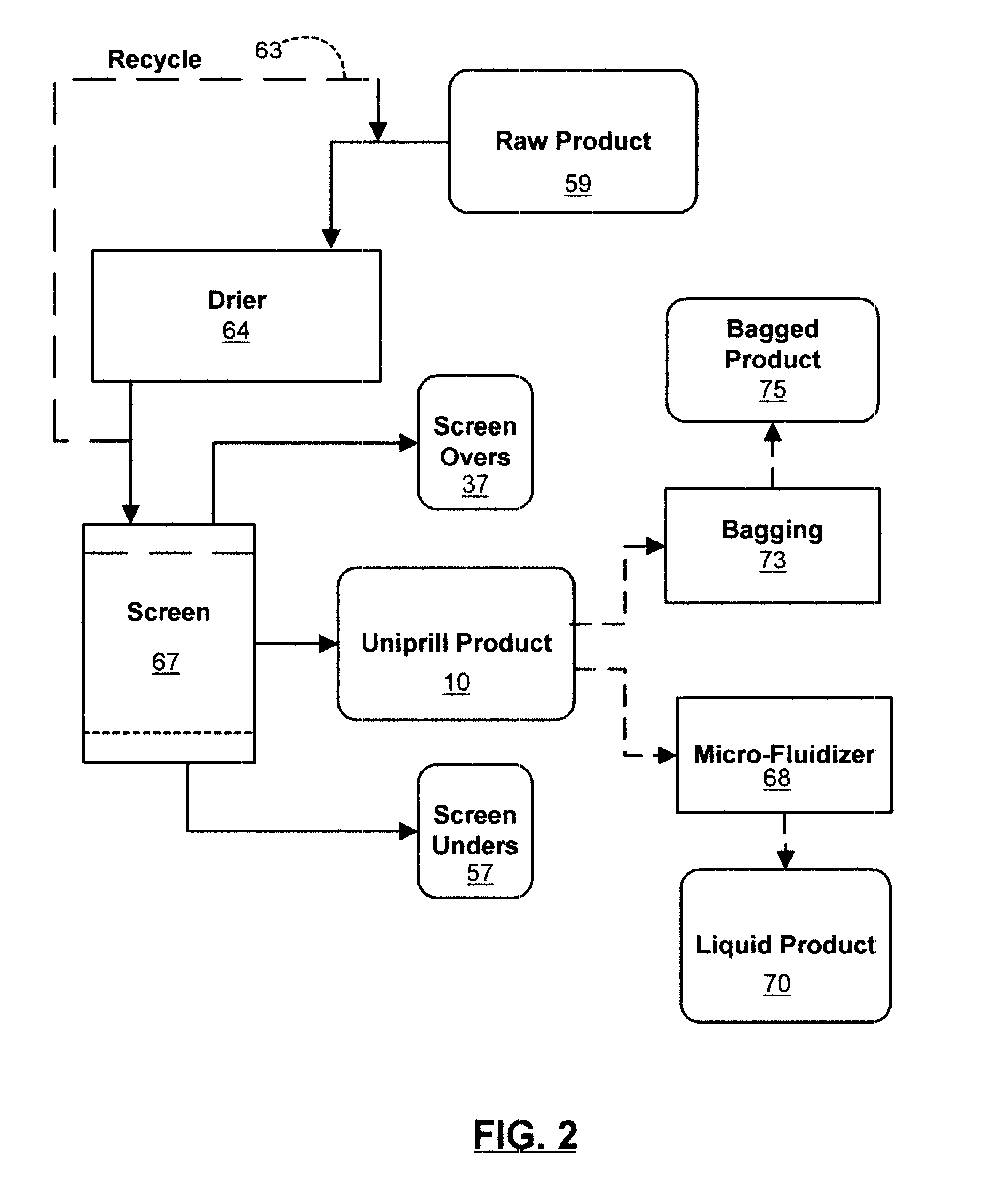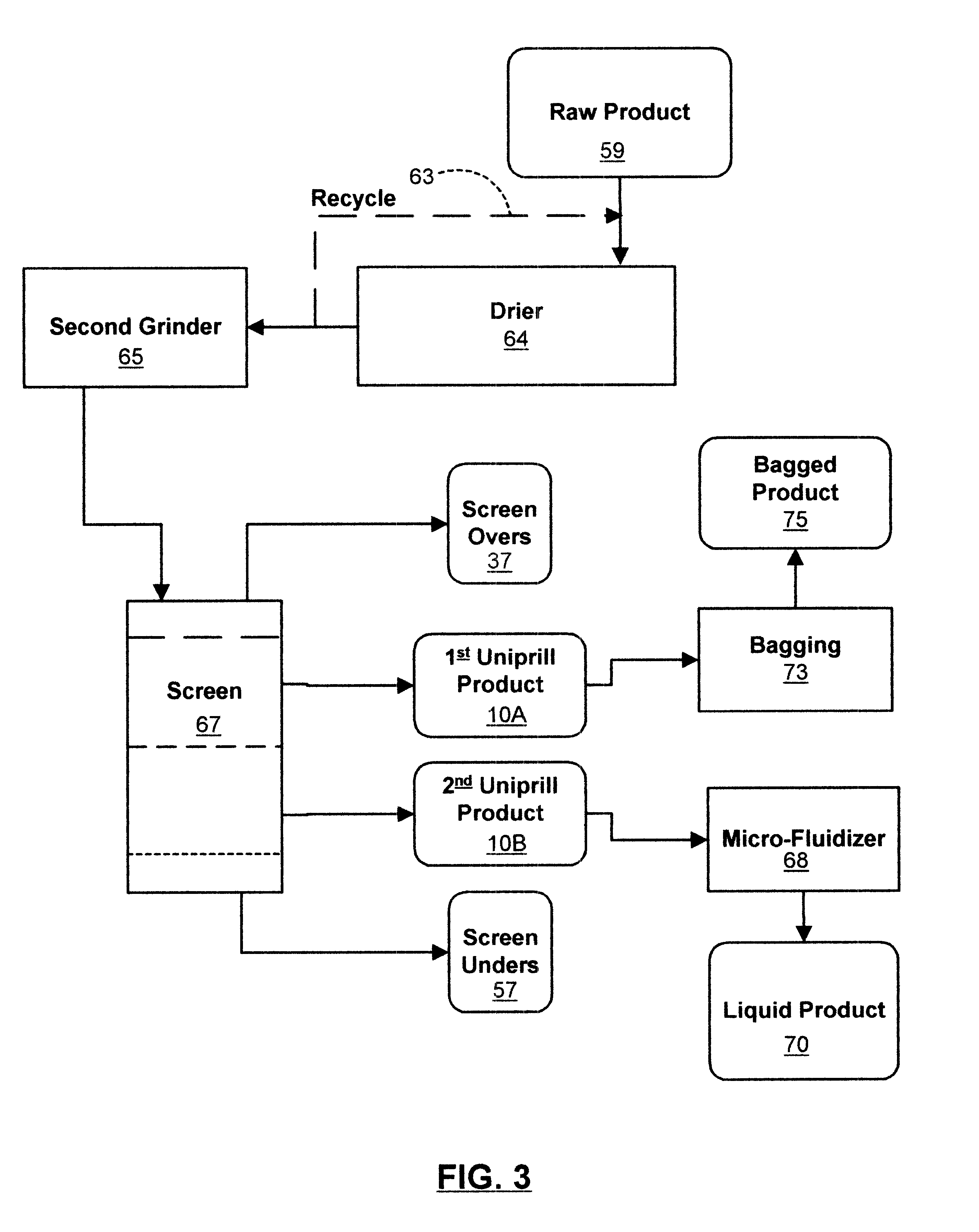Organic material based uniprill fertilizer
a fertilizer and organic material technology, applied in the field of organic-based fertilizers, can solve the problems of reducing the quality of organic fertilizers, putting our sources of food, fiber and energy in jeopardy, and reducing the quantity of organic fertilizers, so as to reduce the moisture content of organic materials, reduce the particle size of finished fertilizers, and reduce the cost of pressurized reactor systems
- Summary
- Abstract
- Description
- Claims
- Application Information
AI Technical Summary
Benefits of technology
Problems solved by technology
Method used
Image
Examples
Embodiment Construction
The present invention includes a method for the production of a uniprill fertilizer. The term "uniprill" is used to describe the formulation of the preferred product of the present invention. The uniprill formulation is defined as a finely granulated product. Furthermore, each granule substantially contains the same ingredients, in the same proportions, as the product, when analyzed in bulk. By processing an organic material with a nutrient supplement after combining it with a lime admixture, the novel uniprill fertilizer is produced. As shown schematically in FIGS. 1 through 3, a uniprill product 10 for use as a fertilizer can be manufactured by treating and supplementing an organic feedstock 22 with a lime admixture 23, by a method that includes the following process steps:
A. Formation of Lime Admixture
The lime admixture 23 is an important and fundamental component of the uniprill product 10 of the present invention. The lime admixture is a specific blend of calcium salt materials...
PUM
| Property | Measurement | Unit |
|---|---|---|
| particle size | aaaaa | aaaaa |
| particle size | aaaaa | aaaaa |
| particle size | aaaaa | aaaaa |
Abstract
Description
Claims
Application Information
 Login to View More
Login to View More - R&D
- Intellectual Property
- Life Sciences
- Materials
- Tech Scout
- Unparalleled Data Quality
- Higher Quality Content
- 60% Fewer Hallucinations
Browse by: Latest US Patents, China's latest patents, Technical Efficacy Thesaurus, Application Domain, Technology Topic, Popular Technical Reports.
© 2025 PatSnap. All rights reserved.Legal|Privacy policy|Modern Slavery Act Transparency Statement|Sitemap|About US| Contact US: help@patsnap.com



